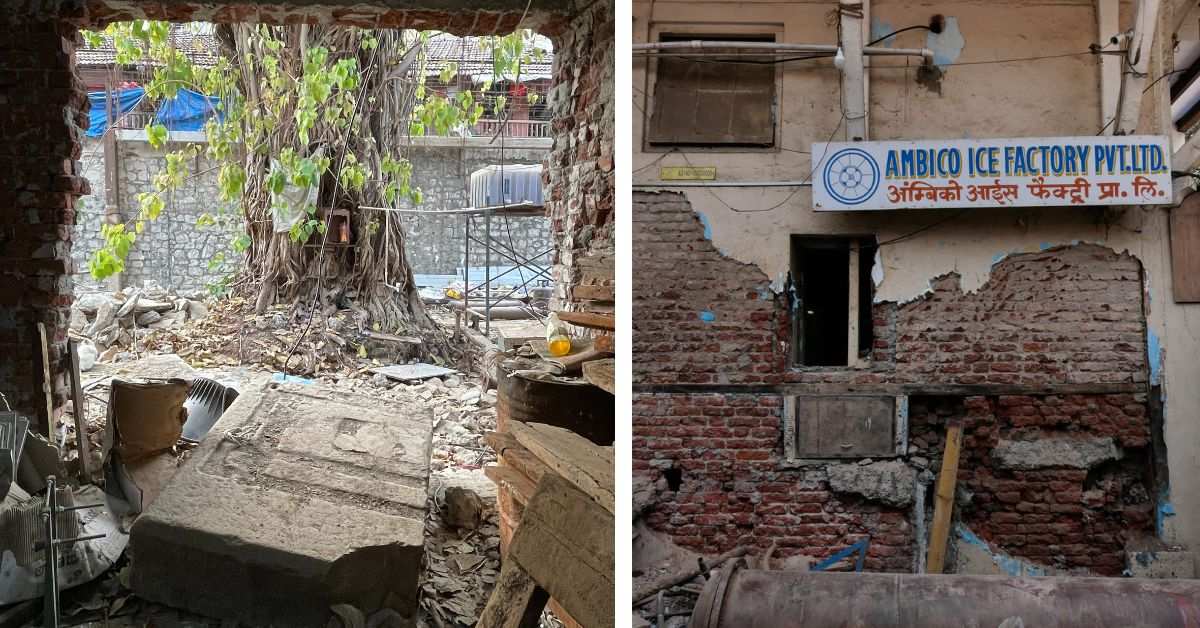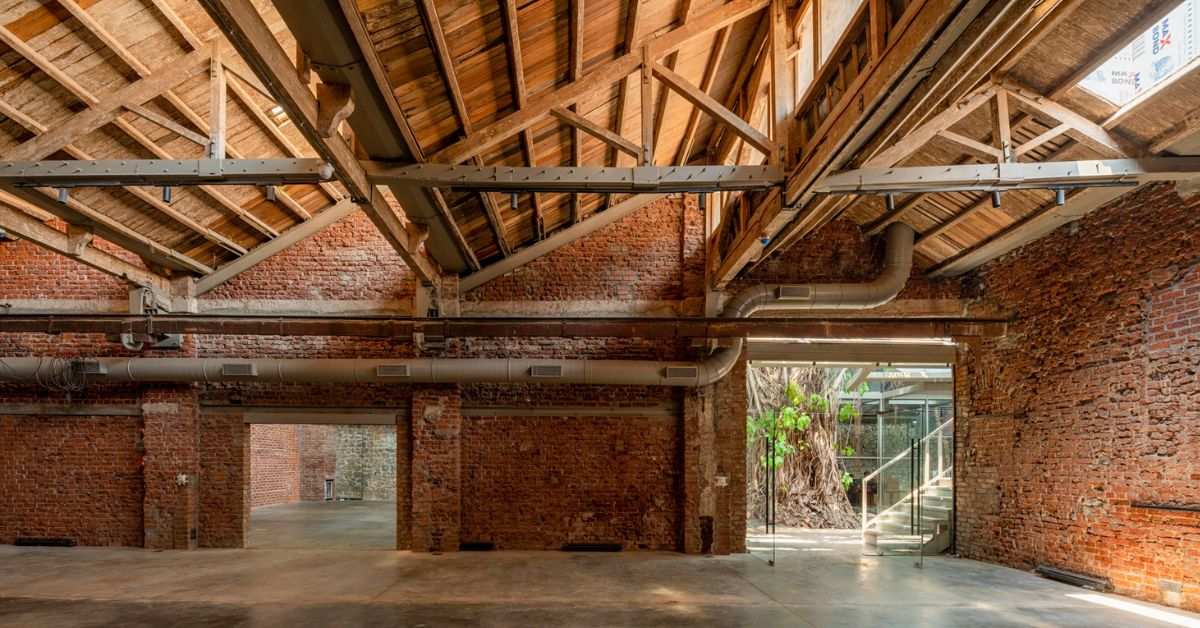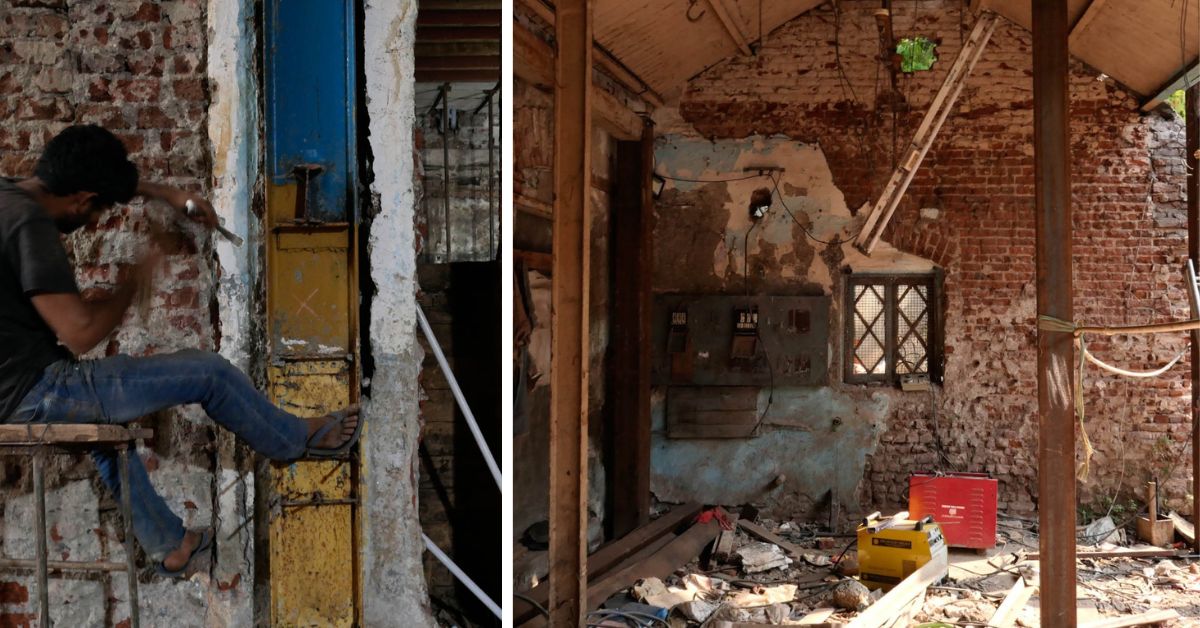Unsure of what to do in Mumbai this weekend? Here’s an idea: Take a trip to the city’s south, the plush neighbourhood of Ballard Estate in particular. As you walk down Calicut Road – a street named after the traders from Calicut (present-day Kozhikode) who settled in the city – you are likely to see a two-storeyed architectural marvel, the IF.BE. What began its journey as an ice factory in 1878, now serves as a space for creative minds to discuss art and ideas.
When IF.BE isn’t hosting a stand-up show by comedian Masoom Rajwani, it finds itself overwhelmed by cinema aficionados. Yes, the scramble for a front-row seat to director Zoya Akhtar’s session on storytelling is real.
When these maestros aren’t gracing the dais, there are meditative movement workshops, film screenings and art exhibitions to sign up for. IF.BE’s social calendar lives up to its definition of a space where architects, designers and artists can converge and collaborate.

How did this transformation happen? An “almost poetic” experience that Kamal Malik — an architect with almost five decades of experience — had when his eyes first met the almost 150-year-old building.
“My first encounter with the Ice Factory is vividly etched in my memory! Sunlight streaming in from the north-light Burma teak trusses and piercing the blocks of ice being moved by the gantry and giving way to a courtyard shaded by the canopy of a huge banyan tree. A fertile environment for contemplation and transformation,” he says.
An ice factory, a banyan tree, and the birth of an idea
As you set sight on IF.BE — an acronym for Ice Factory Bellary Estate — which also has a deeper meaning as Malik will explain later, you may find it hard to believe that what is now a creative hub for the arts, was an ice factory a century ago. So order yourself some matar khasta rolls (fried finger food with green pea filling) while I regale you with a history lesson.
IF.BE’s walls, 150 years ago, would be privy to conversations of factory workers that ranged from whether the gantry was working properly to concerns about being able to meet the ice demand of fish markets in South Bombay.
Ambico Ice Factory (as it was known then) enjoyed its popularity for decades before a factory in New Bombay took over operations. “Ice first came to India on a ship from Boston in the 1800s,” Malik informs.

This ice, history tells us, was stored in ice houses in Mumbai but India’s heat posed a challenge. So, businessmen Nanabhoy Byramjee Jeejeebhoy and JA Forbes launched Mumbai’s first ice factory in Ballard Estate in 1878. It was christened ‘Bombay Ice Manufacturing Co’ before being rebranded as ‘Ambico Ice Factory’.
It was 2019, when Malik first set sight on the building, he acquired it but with no plans to renovate or repurpose the piece of history. The banyan tree, however, would etch an image in Malik’s mind that would eventually become the seed that would reinvigorate the establishment.
“At the time, I had no idea, whatsoever, of either acquiring such a space or wanting to do something with it. But the image of the banyan tree stayed with me,” he recalls. A few months later, Malik found himself saying a ‘yes’ to the project, joined by architects Amardeep Tony Singh and Abhijit Mehta.

Led by Malik Architecture, the team embarked on the quest to give the ice factory a second life.
Today, IF.BE is a 10,000-square-foot space that boasts five sections — ‘The Banyan Tree Café’; ‘The Substation’, which is a reading room and shop for architectural instruments and books; the ‘Ice Factory’ designed for performances; ‘The Cathedral’ where the bulk of exhibitions take place; and the fine dining Indian restaurant, Native Bombay, where guests fuel up.
IF.BE: Stitching sustainability with history
The name of the project and the addition of the dot between the words does not skip my attention. Elaborating on it, Malik shares, “The dot — that gap between ‘if’ and ‘be’ symbolises time. If and be — the possibilities.” And this is essentially the message that the architects have attempted to convey, the freedom that comes with the arts.
As Malik details the restoration, one thing is evident: the rendering was rooted in honest appreciation of the building’s history. The end goal wasn’t simply aesthetics, but to preserve the antiquity of the past.
The 30 months of “painstaking efforts” were directed towards retaining existing details that played a role in the building’s legacy, in a more nuanced fashion. Malik adds that touches of sustainability were included in every way possible. For months, the team scraped away at old plaster, which yielded brickwork and vintage Burma teak woodwork underneath. Look around and you’ll notice in some places the colours don’t quite match. Malik underscores that no attempts were made to polish the teak wood surfaces. This lends a rugged, raw touch to the staircase at the Native Restaurant and Bar, its roof structure and flooring, as well as the Ice Factory roof structure.
So what if there are mismatches? It only adds to the authenticity of the space, the architect believes. That being said, he adds that in places where it was necessitated, safety upgrades were made. These include structural reinforcements to the walls and roof.

The space that took the most amount of brainstorming, Malik shares, was the main Ice Factory, sub-station, cold storage, and the ice-cubing area. “These required intensive examination and surgical intervention through retrofits to stabilise crumbling, warped, and leaking walls, sagging roofs and trusses.”
As in every adventure story, the most exciting part is when a treasure is discovered. When the team stumbled upon giant cooling coils that were once used to manufacture ice, they were thrilled.

These have also featured in the restoration. They are embedded in the glass floor towards the entrance. Another treasure lay in uncovering the historic gantry that once facilitated the transport of ice slabs. “The room was a ‘giant ice tray’ where ice was manufactured. There were four-foot-deep pits with refrigerant coils running alongside that would freeze the water in the pits. The massive ice blocks were then picked up using a crane and moved to an area where they would be cut and distributed for their final purpose.” During restoration, the raised floor was wood panelled and can be opened to reveal the pits.
Through the architect’s lens
It’s almost as if time hasn’t ticked within the Ballard Estate neighbourhood of South Mumbai. With its neoclassical architecture, defunct railway station, which once saw a host of British passengers board steamers, and remnants of the colonial era, the South Bombay pincode is almost a bubble frozen in time. Copious amounts of ice were manufactured every day, which made their way from the factory to the restaurants, fish markets and vegetable markets across South Bombay.
However, it wasn’t just the beguiling history of the ice factory that drew Malik to this project. “It was also the intention to convert this place into a meeting spot for creative-minded folk. There isn’t such a place in the city where architects and designers can meet up,” he claims.
Even projects that are touted as sustainable these days subvert this claim. But Malik was keen that the restoration of the ice factory stayed true to its intentions. The reasons for this lie in his childhood fascinations, he explains. “Growing up in Shimla, I was extremely drawn to nature. Those experiences have been my guide in this journey of architecture and design. There can be nothing more sustainable than nature itself, and through my work, I have tried to look at a more meaningful approach to sustainability. This means understanding the region we are building in, the climate of the region, the flora and fauna, the local building materials, and social and historical influences.”

This acts like a matrix from which Malik’s ideas emerge.
Right since the nascent stages of the project, he says repurposing was key. “It was 80 percent adaptive restoration and 20 percent architectural intervention,” Malik notes.
But, he points out, “Restoring a 145-year-old structure isn’t as straightforward. Think decay, old, damaged brick walls, defects in the light trusses, and old woodwork with cracks. Wherever we found that we needed to insert a metal plate to hold two pieces of wood which had separated, we started to develop some very interesting detailing to be able to achieve this.”

That being said, care was taken to not use any cement in the restoration process. “We discovered that the brickwork that lay under the plaster was a composite brick and wood combination. This gave stability to the walls. It also took care of the seismic aspects. We restored the wood and the brick. The only new material that we bought on site was a very small quantity of lightweight steel, which was used to cover the courtyard space and for the galvanised iron roofs.” It’s almost as if the building’s past gave way to its future.
Today, IF.BE is an architecturally striking oasis of sustainability with detail in each corner. But, Malik says he is biased towards the banyan tree. “It’s symbolic, almost a metaphor for a seed of transformation, something that IF.BE has been through.”
Edited by Arunava Banerjee; Pictures source: Kamal Malik
No comments:
Post a Comment